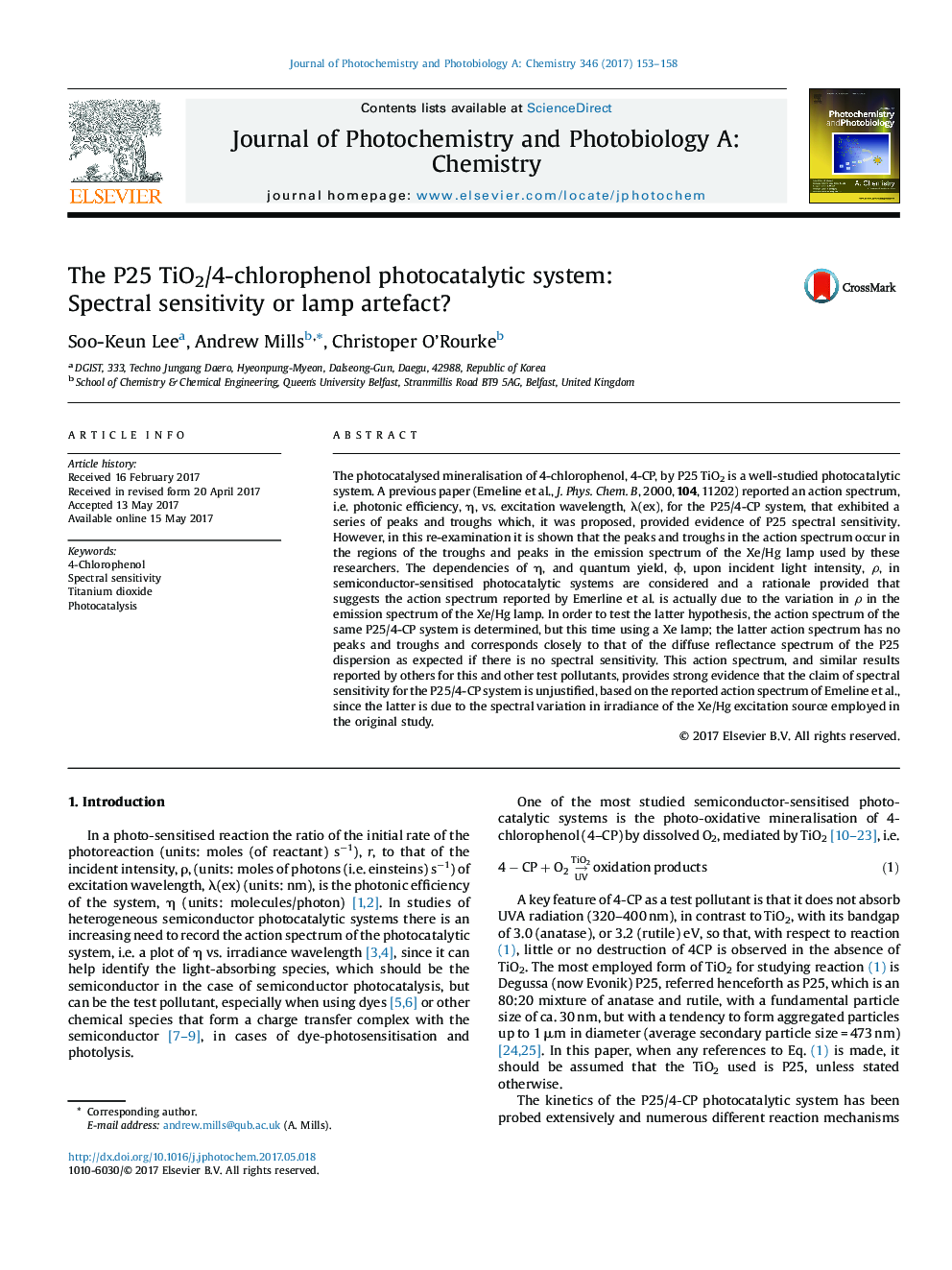| Article ID | Journal | Published Year | Pages | File Type |
|---|---|---|---|---|
| 4753811 | Journal of Photochemistry and Photobiology A: Chemistry | 2017 | 6 Pages |
â¢The action spectrum of the 4-CP/P25 system recorded using a Xe/Hg lamp exhibits peaks and troughs.â¢The emission spectrum of a Xe/Hg lamp has peaks that correspond to the troughs in the action spectrum.â¢The action spectrum of the 4-CP/P25 system recorded using a Xe lamp does not exhibit peaks and troughs.â¢Results show that the P25 TiO2/4-CP system does not exhibit spectral sensitivity.
The photocatalysed mineralisation of 4-chlorophenol, 4-CP, by P25 TiO2 is a well-studied photocatalytic system. A previous paper (Emeline et al., J. Phys. Chem. B, 2000, 104, 11202) reported an action spectrum, i.e. photonic efficiency, η, vs. excitation wavelength, λ(ex), for the P25/4-CP system, that exhibited a series of peaks and troughs which, it was proposed, provided evidence of P25 spectral sensitivity. However, in this re-examination it is shown that the peaks and troughs in the action spectrum occur in the regions of the troughs and peaks in the emission spectrum of the Xe/Hg lamp used by these researchers. The dependencies of η, and quantum yield, Ï, upon incident light intensity, Ï, in semiconductor-sensitised photocatalytic systems are considered and a rationale provided that suggests the action spectrum reported by Emerline et al. is actually due to the variation in Ï in the emission spectrum of the Xe/Hg lamp. In order to test the latter hypothesis, the action spectrum of the same P25/4-CP system is determined, but this time using a Xe lamp; the latter action spectrum has no peaks and troughs and corresponds closely to that of the diffuse reflectance spectrum of the P25 dispersion as expected if there is no spectral sensitivity. This action spectrum, and similar results reported by others for this and other test pollutants, provides strong evidence that the claim of spectral sensitivity for the P25/4-CP system is unjustified, based on the reported action spectrum of Emeline et al., since the latter is due to the spectral variation in irradiance of the Xe/Hg excitation source employed in the original study.
Graphical abstractDownload high-res image (91KB)Download full-size image
